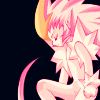| View previous topic :: View next topic |
| Author |
Message |
|
|
|
GATSU
Joined: 03 Jan 2002
Posts: 15624
|
 Posted: Wed May 27, 2020 12:32 pm Posted: Wed May 27, 2020 12:32 pm
|
 |
|
|
I forget the name, but there's this '97 web comic with plastic models which Disney owes for Zootopia. I remember. It's Leisure Town.
Last edited by GATSU on Thu May 28, 2020 4:26 pm; edited 1 time in total
|
| Back to top |
|
|
|
|
andyos
ANN Associate Editor
Joined: 27 Oct 2008
Posts: 270
|
 Posted: Wed May 27, 2020 12:42 pm Posted: Wed May 27, 2020 12:42 pm
|
 |
|
|
Thanks for the article! I reviewed Beastars for one outlet, and brought up Zootopia, which was retitled Zootropolis in Britain for some reason. I'll quote the relevant bits of my review below. WARNING: I bring up the subject of sexual violence in the following discussion.
"[...] Beastars feels like a riff on the 2016 Disney CG film Zootropolis, a superbly smart film which used animals to talk about race. Beastars is just as allegorical but it changes the metaphor, commenting not on race but on gender. [...]
"The supporting cast includes male herbivores and female carnivores, who add interesting turns as they break expectations. But at heart, Beastars keeps to a primal gender metaphor. Men are predators, women their prey. Legosi may be likeably awkward; in the first minutes, another girl apologises for prejudging such a gentle-natured wolf. But the audience knows he’s a barely-coded almost rapist, trying to reform.
"For some viewers, that’ll cancel the show right there. But embrace the fantasy metaphor, accept it as a way to talk about overarching, half-literalised fears, and Beastars becomes darkly brilliant. If we’re comparing it to Hollywood animation, then Beastars extends those raucous old short cartoons by anarchist artist Tex Avery with titles like Red Hot Riding Hood, where a sex-crazed wolf went berserk with lust."
The review goes on to discuss Haru - "Like Judy Hopps in Zootropolis, Haru is not a cute bunny, engaging in a ball-busting takedown of moe culture."
|
| Back to top |
|
|
|
Hal14
 Joined: 01 Apr 2018
Joined: 01 Apr 2018
Posts: 731
Location: Heart of africa
|
 Posted: Wed May 27, 2020 1:13 pm Posted: Wed May 27, 2020 1:13 pm
|
 |
|
|
^^^^^
While the most focus of beastars has been on sex, later arcs do focus on race in regards to characters like legosi's grandad or Melon, (a carnivore/herbivore hybrid)
|
| Back to top |
|
|
|
Triltaison
 Joined: 03 Jul 2011
Joined: 03 Jul 2011
Posts: 801
|
 Posted: Wed May 27, 2020 1:48 pm Posted: Wed May 27, 2020 1:48 pm
|
 |
|
| HAL14 wrote: | | ^^^^^
While the most focus of beastars has been on sex, later arcs do focus on race in regards to characters like legosi's grandad or Melon, (a carnivore/herbivore hybrid) |
Really? I find that rather interesting considering I thought the entire point of the anime series was just being a metaphor for teenagers coming to terms with their own burgeoning sexual urges. I was rather surprised that the first episode was set up as though it were a mystery, and then the mystery got shelved for a few teenage sexual identity stories instead. There's nothing wrong with that, but I expected a little more emphasis on the murder mystery from the initial setup. It's good to know the manga has arcs exploring other topics as well because I wasn't really sure what else the anime wanted to focus on.
|
| Back to top |
|
|
|
Blood-
 Bargain Hunter
 Joined: 07 Mar 2009
Joined: 07 Mar 2009
Posts: 24319
|
 Posted: Wed May 27, 2020 2:40 pm Posted: Wed May 27, 2020 2:40 pm
|
 |
|
|
For me, the big difference between Zootopia and Beastars is that Zootopia was explicitly about racism, whereas Beastars - while racism is definitely a factor - concentrates more on gender and violence.
Personally, I found the gender analogies in Beastars kind of retrograde. (At least Zootopia find a somewhat fresher spin on racism, going for "even people who think they aren't racist may be harboring racist sentiments" rather than just a straight up, "racism is bad, mmmkay?"approach.
What I found retrograde about Beastar's gender politics is the notion that females are helpless prey who have to depend on the capacity of males to restrain themselves in order to be safe. Females are helpless, cute prey and men are the big, bad wolves. Not a very sophisticated take for a show made recently, imo.
I was also turned off by the idea that the show seemed to suggest, "sure male violence can be problematic, but hey, it can also be used in the service of good!" And as a result, we get one of the most hackneyed "damsel in distress" plot lines you can possibly imagine.
For my money, Zootopia was a lot smarter, a lot more current and a lot more entertaining.
|
| Back to top |
|
|
|
|
scrwbll19
Joined: 16 Jan 2006
Posts: 87
|
 Posted: Wed May 27, 2020 3:47 pm Posted: Wed May 27, 2020 3:47 pm
|
 |
|
|
While I enjoyed Zootopia when it came out, the themes on racism and prejudice were laid on too thick for me. The movie virtually assumes that racism is the natural state of things and creates a bad and evil society. While racism certainly is an evil, the way the movie tries to say that Zootopia's society and by extension American society is inherently and intrinsically bad and evil creates a message that leaves little hope, not something that kids need to see. (They can have their dreams quashed later in life.) This implies that the current world order is irredeemable and needs to be scrapped, which is basically what happens in the movie. Even though the movie tries to be nuanced about it, the length of the movie doesn't fully allow for that to happen.
Contra this, Beastars has a much longer manga and anime, and it takes full advantage of that. The author of the article seems to get trapped in the thinking that Beastars is about prejudice and race like Zootopia, which seems to make for a less than satisfying analysis of three work for me. While that does exist on a level, it seems like an overlay of an American understanding on a Japanese work, which comes from a society that is largely homogeneous. From that angle, bullying, getting put in a box by having to conform to societal standards and pressures, and struggling with one's identity as a teen seem to come out as stronger themes.
In a sense, Beastars is a lot like Persona in how it crafts its characters and their problems. Like Persona as well, it largely depends on the characters' inner struggles and exercise of free will and decision making to work. When compared or contrasted with Zootopia, this is probably one of the biggest differences between the two works. Zootopia's characters are virtually put on rails set to make the characters rebel against an inherently corrupt society, not necessarily by choice, but because they must out of some sense of indignant rage. Viewers don't really see the internal struggle. The closest we get is after Judy gets punished. Beastars transcends this by letting viewers into the heads of its characters, which shows that Legosi, for instance, is giving it his all, despite appearances and other characters' preconceived notions, and he actively has to make decisions that force him to grow as a character, even when he doesn't feel that he can. So, while the author of this article seems to think that Zootopia is closer to the human side of things, that is only true on a surface level. When one examines literature, which Beastars originates from, a huge theme is man versus nature or self. Beastars excels at this angle, which makes for a more compelling story and case for Beastars being more "human" in the way it handles its themes. Real people struggle, and they struggle hard. Caricatures of people in animal costumes stick to the rails and see themselves as the heroes of some revolution. That debate though would probably be better suited to a Code Geass discussion thematically speaking.
|
| Back to top |
|
|
|
|
gpanthony
Joined: 18 Dec 2013
Posts: 242
|
 Posted: Wed May 27, 2020 4:59 pm Posted: Wed May 27, 2020 4:59 pm
|
 |
|
|
It's not hard to see why the two are compared, but for all the articles I've read no one's pointed out the obvious: both have a Canid male protagonist and Rabbit female protagonist. I see lots of articles talking about how they have "talking animals" as the main cast, but if we had Nick as a Cheetah and Legosi as a Wolf, I think there'd be less comparison between the two.
|
| Back to top |
|
|
|
jellybeanbandit
 Joined: 18 Jun 2019
Joined: 18 Jun 2019
Posts: 107
|
 Posted: Wed May 27, 2020 4:59 pm Posted: Wed May 27, 2020 4:59 pm
|
 |
|
|
Maybe it's just me, but so many series that use animals as metaphor for things like this almost always come off as very hollow or contradictory. Carnivores do eat other animals, it's a fact of nature and life. To paint that as just being a negative, untrue stereotype comes off as very odd. Zootopia makes little sense in its themes and messages when, for all intents and purposes, carnivores are dangerous to herbivore. Even odder still is how it was the carnivores are the supposed oppressed group as opposed to the herbivores which makes little logical sense and it should be the opposite as predators have more power. Yeah, I get it, it's a cartoon. But it's a repeating theme I find in many allegorical works. If the allegory makes no logical sense for the message you want to say, maybe make sure the allegory works on a fundamental level before going to print and if it doesn't make sense find a new allegory to use. Zootopia's animal theme is cosmetic window dressing at best.
Beastars comes off as more logical and better written to me, in terms of using animals. Beastars flat out state that carnivores are dangerous, and the precautions and preconceptions surrounding them are justified and it's something everyone needs to live with and adapt to. We see Legosi's struggles to fight his natural instincts many times and it's much more of a morally gray topic than some idealized fantasy world where nobody but the obviously evil villain does anything wrong. Of course, in universe stuff like this is perfectly fine, but it leads to some rather unfortunate implications if we're to take it as a parallel to real world topics. I'm still not sure what groups the message is supposed to be about exactly. Maybe it shouldn't be representative of anyone in particular and just a story about internal struggles and overcoming personal demons. Yeah, that would be much less of a can of worms.
|
| Back to top |
|
|
|
|
Zimmer
Joined: 08 Jul 2015
Posts: 202
|
 Posted: Wed May 27, 2020 10:09 pm Posted: Wed May 27, 2020 10:09 pm
|
 |
|
|
It's a lazy comparison that's only made because they're both fairly recent.
|
| Back to top |
|
|
|
|
Kirki
Joined: 11 Jun 2019
Posts: 296
|
 Posted: Thu May 28, 2020 3:38 am Posted: Thu May 28, 2020 3:38 am
|
 |
|
| Blood- wrote: | |
What I found retrograde about Beastar's gender politics is the notion that females are helpless prey who have to depend on the capacity of males to restrain themselves in order to be safe. Females are helpless, cute prey and men are the big, bad wolves. Not a very sophisticated take for a show made recently, imo.
|
Nope. Example: Yuno and Louis.
I understand why it might seem that way, but the first season of Beastars, compared to the manga so far, is a teeny tiny tip of the iceberg. I liked the article, but I don't think that taking into consideration the first season alone can in any way grasp what Beastars is about. The most obvious difference: the secondary protagonist of Beastars isn't Haru, even if she's a very important player - it's Louis. But we barely saw him in the first season.
That said, I think Beastars' message is just much more on the individual and less universal spectrum - there are people who have to mask their intense desires in order to fit in a society. Some have to mask their talents, their capabilities, others have to mask their preferences. Everybody, has to supress, in some way, their inner "animals", for the sake of the greater good. It's just that some people are better at it and not as inconvenienced as others.
|
| Back to top |
|
|
|
Blood-
 Bargain Hunter
 Joined: 07 Mar 2009
Joined: 07 Mar 2009
Posts: 24319
|
 Posted: Thu May 28, 2020 6:02 am Posted: Thu May 28, 2020 6:02 am
|
 |
|
|
@ Kirki - but Legoshi/Haru is the dominant male-female relationship in the first season. The existence of Louis or Juno does not change the dynamic of the wolf and rabbit. However, I'm glad you mentioned Juno because she was another example of what I consider a retrograde view. I got the distinct impression the show wanted me to consider her confidence to be a mark against her. How dare a female be direct and assured. Now, that's just my interpretation, but it's how her characterization made me feel.
I do agree with your assessment of how individuals need to mask their inner feelings for the sake of social harmony, a classic Japanese theme that doesn't particularly resonate with me as a Westerner. That's another problem I had with Beastars - for me there was almost TOO much analogy going on and it gave me a sort of scattershot impression like the show didn't really know what it wanted it wanted to say. Again, just my personal feeling.
All this might suggest I didn't like the show, which is not true. It's just that like a lot of titles I like, that doesn't mean there aren't things that didn't jell with. I'm hoping we see more of the egg proud hen next season. I dug her.
|
| Back to top |
|
|
|
Hiroki not Takuya
 Joined: 17 Apr 2012
Joined: 17 Apr 2012
Posts: 2707
|
 Posted: Thu May 28, 2020 9:18 am Posted: Thu May 28, 2020 9:18 am
|
 |
|
Wow, great analysis! Was a pleasure to read and a refreshing change from the "This is good/bad because..." so prevalent. Hope to see more 
|
| Back to top |
|
|
|
|
dcmc
Joined: 25 Jun 2011
Posts: 60
|
 Posted: Thu May 28, 2020 1:45 pm Posted: Thu May 28, 2020 1:45 pm
|
 |
|
| jellybeanbandit wrote: | | Even odder still is how it was the carnivores are the supposed oppressed group as opposed to the herbivores which makes little logical sense and it should be the opposite as predators have more power.
|
its actually make sense when the herbivores population bigger than carnivores,no matter how powerful a carnivores are,they would still lose againts quantity.
dont forget theres a lot herbivores that bigger&stronger than carnivores are like the elephants,rhinos,etc
|
| Back to top |
|
|
|
Juno016
 Joined: 09 Jan 2012
Joined: 09 Jan 2012
Posts: 2440
|
 Posted: Fri May 29, 2020 3:47 am Posted: Fri May 29, 2020 3:47 am
|
 |
|
|
...Wait, I watched a video in my youtube recommendations saying all the same stuff. Is the author of this article a youtuber?
|
| Back to top |
|
|
|
|
 Bargain Hunter
Bargain Hunter